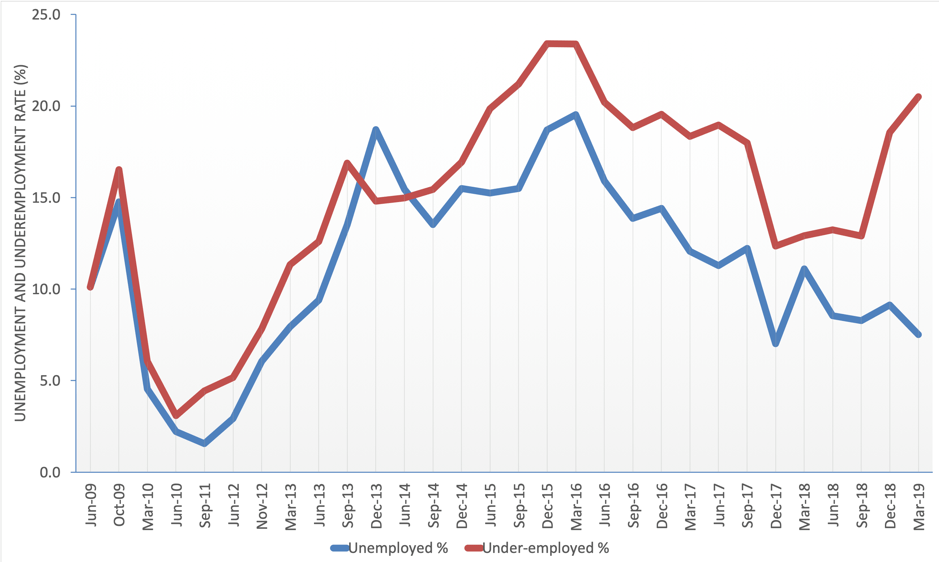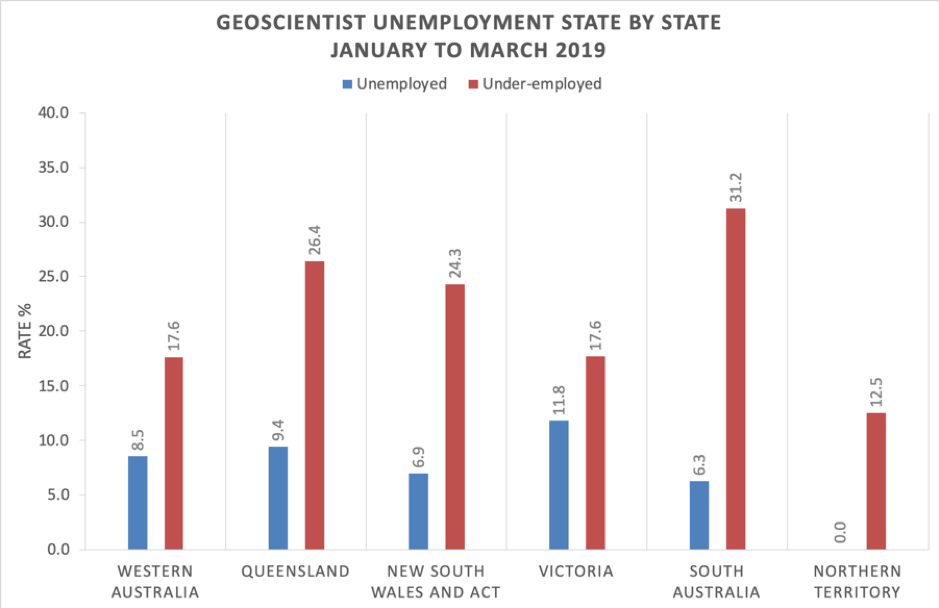Australian Geoscientist Employment Survey – March 2019
Unemployment amongst Australian geoscientists continued to fall during the first quarter of 2019. At 31 March 2019, the latest AIG Australian Geoscientist Employment Survey revealed an unemployment rate of 7.5%, down from 9.1% recorded three months earlier at the end of December 2018.
The underemployment rate amongst self-employed geoscientists, however, increased to 20.5%, continuing an upturn in the under-employment rate evident in the December 2018 survey when a rate of 18.5% was recorded.

The fall in geoscientist unemployment continues a gradual, downward trend that became evident in March 2016.
In the first quarter of 2019, geoscientist unemployment increased in all states except Queensland and the Northern Territory. The biggest increase was observed in Victoria where the unemployment rate increased from 5.9% to 11.8%. In Queensland, the unemployment rate fell from 15.1% to 9.4%. Underemployment increased in every state except South Australia, where the rate fell from 36.8% to 31.2%. Too few responses were received from Tasmania to quote figures for that state.

AIG President, Andrew Waltho, welcomed the continued fall in geoscientist employment but noted that self-employed geoscientists continued to struggle.
“There is, clearly, evidence that increased industry activity, particularly in mineral exploration, is creating new employment opportunities for geoscientists, particularly in mineral exploration, but any talk of a boom seems premature” Mr Waltho said.
“We received excellent response to the survey again, with more than 400 contributions received from geoscientists across Australia” Mr Waltho said.
The next survey in this series, for the second quarter of 2019, will open for contributions in early July.